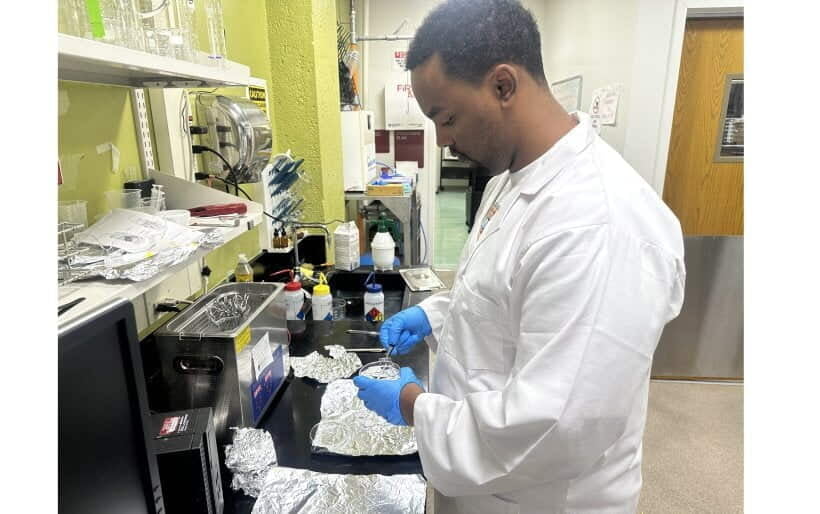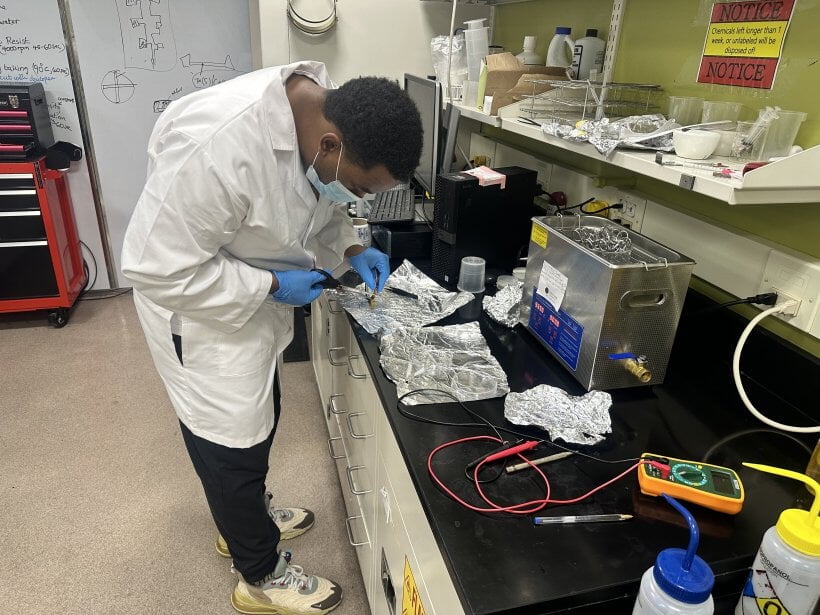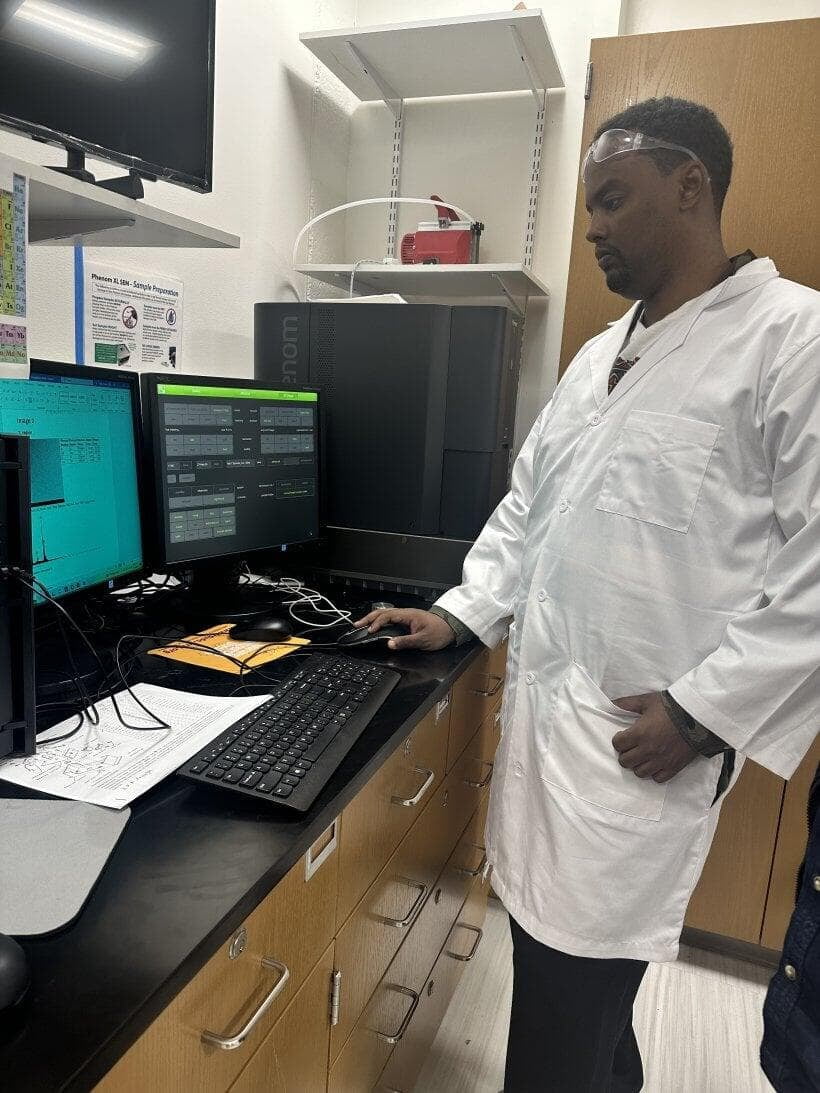
When Tewelde Semere was in middle school, the students were given questionnaires to help them identify which career they’d be well suited for. His results recommended he become an engineer, and that stuck with him. “I always excelled at solving problems in STEM subjects. I took math courses two years ahead of my grade, so becoming an engineer made sense to me.”
His strong academic track record landed him a spot at Montgomery Blair High School, a magnet school with plenty of AP classes and engaging teachers that Tewelde says prepared him well for university.
Now he’s an undergrad student studying computer engineering at the University of the District of Columbia, where he’s had the chance to get involved in clean energy research funded by the U.S. Department of Energy through the Science and Technology Research Partnership (STRP).

Can you tell me about the STRP-funded research project you are working on?
The project aims to create Perovskite solar cells with a high productivity and efficient rate. To do this, we are spin coating SnO2 on ITO (indium tin oxide) glasses to create an electron transport layer. After spin coating SnO2 we are going to spin coat various other materials such as Alpha Formamidinium Lead triIodide (FAIPbI3, Perovskite) and Spiro-OMeTAD. There are other steps after just spin coating such as putting the glasses in the annealing chamber to heat it up or using our thermal evaporator to deposit gold electrodes. I know that sounds pretty complicated, but basically, we’re trying to make solar panels more productive and efficient.
I like that there’s a lot of variety with the project. We get to use devices at a nanotech lab and evaluate the product with a scanning electron microscope. It’s super exciting to be a part of research that can one day accelerate renewable energy deployment.
What sparked your interest in clean energy?
I was always mindful of being eco-friendly and cognitive of my carbon footprint, but the urgency of climate change really started to sink in after I took a physics and differential equations class with a professor who drilled the issue into our heads. Now I’m passionate about applying science, math, and engineering to ensure that we have a livable planet in the future. I want to invent technology to solve problems we encounter every day.

What has been your biggest takeaway or learning throughout the experience of working on this research?
You must learn how to fail if you want to succeed. There have definitely been some growing pains. Research can be very tedious and at times discouraging work, but you have to take it in stride and recognize that with each failed attempt, you’re learning something and gathering new information. For example, when I’m creating solar cells here in the lab, I’m repeatedly adding components to glass. They don’t always come out how we want, but each time we get closer and closer to our goal.
What do you hope to do with your career after university?
After I finish my undergrad in 2025, I want to get a master’s in electrical engineering. It’s not too different from computer engineering; it’s just more focused on hardware components and various electronics. My goal next is to make a career in research and work for the Department of Energy or Department of Defense, or a national lab. I like structure and discipline, and I feel like a career in federal research will provide that. Another future goal I would love to achieve is to open some schools in Eritrea specializing in STEM education.
